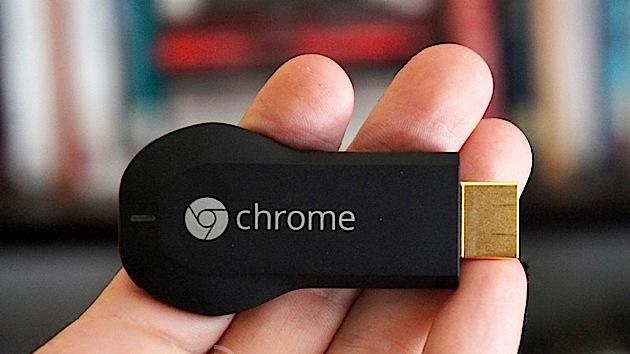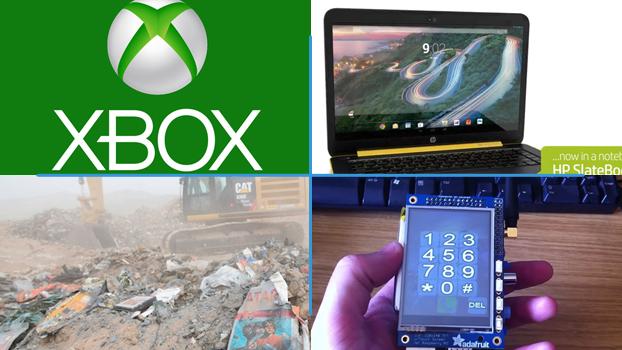RaspberryPi
Latest

Raspberry Pi has sold 5 million of its DIY-friendly computers
The audience for do-it-yourself computing might be larger than you think. The Raspberry Pi Foundation just revealed that it recently sold its 5 millionth mini computer -- not bad considering that the team had only delivered 1.75 million Raspberry Pis as of October 2013, or 16 months ago. The figure pales in comparison to what giant PC makers can do (Apple now sells over 5 million Macs per quarter), but it's impressive for a barebones board meant for schools and homebrew projects. In fact, the team notes that it could be the best-selling UK computer maker "ever."

Sound Off! Share what you're doing with a Raspberry Pi
Earlier this week, the Raspberry Pi Foundation surprised us with the Raspberry Pi 2 Model B, a new and improved board with some serious hardware upgrades under the hood. The original Raspberry Pi provided an easy and convenient platform for hardware enthusiasts to tinker with, and people have done some cool things with them. Have you done anything particularly interesting or unique with a Raspberry Pi? Head over to the Engadget forums and share your own projects! [Image: Photo by Gavin Roberts/PC Plus Magazine via Getty Images]

Raspberry Pi 2 announced with substantial hardware upgrades
While Raspberry Pi fans were told to expect a brand new board somewhere around 2017, it turns out that wasn't quite true. This is the Raspberry Pi 2 Model B: a substantial upgrade from the Model B+ that will go on sale later today for $35/£25. The new board has some fundamental upgrades that could well warrant the upgrade for existing Raspberry Pi dabblers -- that is, if smaller wasn't better. Raspberry Pi Foundation lead Eben Upton told The Register that the new Model B "is a usable PC now." A fact borne out by official support for Windows 10. "You could use a Raspberry Pi 1 as a PC but you had to say 'this is a great PC in so far as it cost me 35 bucks'. We've removed the caveat that you had to be a bit forgiving with it. Now it's just good."

Raspberry Pi's new computer is somehow even smaller and cheaper
Everyone's favorite minicomputer has just gotten even smaller. The Raspberry Pi Foundation is today introducing the Model A+, a revamped version of its low-end Model A board priced at just $20 (£20 in the UK). While the processor and RAM -- a Broadcom BCM2835 SoC and 256MB, to be specific -- remain the same as its predecessor, the new model is far smaller at just 65mm (2.6 inches) in length versus the old model's 86mm (3.4 inches). It also draws less power and has improved audio circuitry.

Build a $35 Raspberry Pi-based Time Capsule backup server
Here's a fun weekend project for those of your who like building your own Mac add-ons. The raymii.org site has posted a tutorial on how to build your own US$35 Time Capsule using a Raspberry Pi single-board computer, rather than paying $299 for the official Apple version (that is, if you happen to have 2 TB of hard drive storage kicking about unused). Apple's Time Capsule bundles an Airport wireless router with either 2 TB or 3 TB of internal storage, to back up multiple Macs on your network. For the project, you'll need two things; a Raspberry Pi, Model B/B+ and a USB disk. The builder has tested this method with a 128 GB USB flash disk and a 1 TB USB hard drive. It's possible to get a lot of storage using this method. The entire process is complicated, so set aside a good block of time to complete the project. [Also, don't forget to test your backups! --Ed.] Once you're done, you'll have a perfectly serviceable budget Time Capsule. Enjoy the storage and savings.

Pranksters can hijack your Chromecast to show whatever they want
It's easy for someone in your home to interrupt your Chromecast stream and play something of their own, but you can always retake control... right? Well, don't count on it. Analyst Dan Petro has built the Rickmote Controller, a proof-of-concept device that hijacks Google's media stick to play everyone's favorite Rick Astley video (and theoretically, any media) on loop. The Raspberry Pi-based box simply floods the Chromecast with WiFi disconnection requests, kicking the adapter into its setup mode; after that, it's easy for the Rickmote to make its own connection and deliver non-stop '80s pop.

Man runs Telnet BBS on an Apple IIe using Raspberry Pi because he can
When life hands you old technology you can either throw it away, store it, or try and make it work again. Thanks to the invention of powerful and easily adapted micro computers like Raspberry Pi it's now easier than make your own Frankenstein machine. YouTube user Lon Seidman figured out how to check his email on a 1986 Apple IIe modified with just such a Raspberry Pi device. With the help of a serial to USB connector the IIe thinks sees the Pi device as a modem. Using the modified IIe Seidman is able to check his email from his laptop even when he's away from home. Here's his fascinating video showing exactly how he was able to rig up the computer to his Raspberry Pi. Enjoy.

The Otto is an adorable point-and-shoot for making GIFs
It looks like a baby's first camera, but the blue and black plastic Otto camera is more than just a toy-like point-and-shoot. It's a camera made specifically with the intention of creating instant GIFs -- you know, these things? -- and it's pretty delightful. It operates a lot like Vine or Instagram video, in that you simply turn the crank (yes, really) to record. When you're done capturing silliness, you push the GIF directly to your phone over a shared WiFi network. Easy! There's a video of the Otto in action just below, as well as a pretty great GIF with Shaquille O'Neal looking sassy. Can you resist?

Daily Roundup: Raspberry Pi cellphone, HP's Android laptop, and more!
You might say the day is never really done in consumer technology news. Your workday, however, hopefully draws to a close at some point. This is the Daily Roundup on Engadget, a quick peek back at the top headlines for the past 24 hours -- all handpicked by the editors here at the site. Click on through the break, and enjoy.

Raspberry Pi modded into a $160 cellphone
Remember how happy you were when you got your Raspberry Pi project to do, well, anything? Programming savant and photographer David Hunt has merely created a working cellphone with his, complete with video proof (below). The PiPhone consists of a bunch of off-the-shelf parts, like a PiTFT touchscreen and 2,500mAh battery that cost a grand total of $158. While that might seem a lot for an ungainly dumbphone, bear in mind that it's a one-off with no economies of scale working for it. As any Pi hobbyist knows, it's also an impressive feat and Hunt is willing to upload his source code if you're brave enough to give it a crack. [Image credit: David Hunt]

Raspberry Pi's computer now fits in the space of a tiny memory stick
Didn't think that Raspberry Pi's namesake computer could get any more miniscule? Think again. The organization has unveiled the Compute Module, a board that stuffs the Pi's processor and 4GB of storage into the space of a stick of DDR2 laptop memory; you're looking at the tiny new device on the left. This isn't meant to show off Raspberry Pi's miniaturization skills, though. Fitting the system into a small standard connector lets circuit board builders attach whatever interfaces they like, rather than make do with the built-in ports on a conventional Pi design. You'll have to buy the Compute Module alongside a starter IO Board when the hardware launches this June, but it will eventually be possible to get the modules by themselves. Individual pricing isn't available just yet. However, Raspberry Pi says that large-scale buyers (think educators and entrepreneurs) can buy batches of 100 at about $30 per piece.

Daily Roundup: Blackberry's identity crisis, Oculus Rift meets Game of Thrones and more!
You might say the day is never really done in consumer technology news. Your workday, however, hopefully draws to a close at some point. This is the Daily Roundup on Engadget, a quick peek back at the top headlines for the past 24 hours -- all handpicked by the editors here at the site. Click on through the break, and enjoy.

Raspberry Pi gets its own sound card
When UK Prime Minister David Cameron gave a speech at CeBIT this year, what examples did he use to highlight tech innovation in Britain? Yes, ARM and Imagination were on his list, but he also referred to the tiny, Linux-based computer called Raspberry Pi, which has now sold over 2.5 million units. In a timely fashion, the Pi's makers, element 14, have just announced a new $33, Wolfson-powered audio card that should give the device a broader range of functions.

Adafruit shows how to make your own touchscreen camera using Raspberry Pi (video)
Do you like the idea of building your own digital camera, but want something a little more sophisticated than Ikea's cardboard cam? Adafruit will be happy to help you out. It has posted instructions for making a point-and-shoot using little more than a Raspberry Pi, its matching camera module and Adafruit's PiTFT touchscreen. The resulting device won't rival any modern point-and-shoot for quality, but it's truly usable -- you can even slap on a WiFi adapter to upload shots to Dropbox. Whatever your experience with DIY photography, you'll find everything you need to know at the source link.

Daily Roundup: 2013 Mac Pro review, Jack Dorsey joins Disney, Google powered robots and more!
You might say the day is never really done in consumer technology news. Your workday, however, hopefully draws to a close at some point. This is the Daily Roundup on Engadget, a quick peek back at the top headlines for the past 24 hours -- all handpicked by the editors here at the site. Click on through the break, and enjoy.

Raspberry Pi-equipped AR.Drone can hijack other quadcopters' WiFi link (video)
There might come a time when you'll wait for a drone instead of a truck for your Amazon or UPS package, while worrying about tech-savvy thieves instead of armed robbers. Let's just hope no ne'er-do-well uses Samy Kamkar's SkyJack for evil, because the software can worm its way into flying machines to take over their brains. Kamkar, who hacks things presumably to spread security awareness, loaded the offending code onto a Raspberry Pi-equipped Parrot AR.Drone 2.0. The result is a flying contraption that's capable of seeking out other drones' wireless signals and forcefully severing their connection from their true owners. Worse, the software works just as well installed on a land-based computer. Curious folks can check out Kamkar's video after the break for a quick demo, but those tech-savvy enough can get a deeper understanding through SkyJack's source code. The system can only hijack drones with Parrot's WiFi MAC addresses at this point, but here's hoping companies take note and make future delivery drones more secure just in case.

Raspberry Pi hack creates a smart TV from a not-so-bright set
Many of us only wish we could upgrade our less-than-smart TVs. Carnivore at DroidBuild, however, has taken matters into his own hands -- he recently finished installing a Raspberry Pi-based media center into his own 40-inch Hisense screen. The hack replaces the TV's built-in speaker with a Raspbmc system that has a 3D-printed faceplate for Ethernet and USB ports, an infrared adapter and external speaker output. While the modification is risky (and certainly voids the warranty), it's much more elegant than hanging the Raspberry Pi off the back of the set. Check Carnivore's photo guide at the source link if you'd like to know how he achieved the feat.

Raspberry Pi becomes a math teacher through new Wolfram bundle
Raspberry Pi computers have already proven to be valuable educational tools, but they're largely blank slates until teachers (and curious owners) find the right software. As of today, that software search just got a lot easier. The company has reached a deal to bundle Wolfram Research's Mathematica app and its companion Wolfram Language with each copy of Raspbian Linux; every Raspberry Pi owner now has free tools for everything from learning math to sophisticated programming. The deal also brings a Remote Development Kit that lets tinkerers connect the Raspberry Pi to Mathematica on a regular PC. While the updated Raspbian download isn't yet ready, all existing users can run a command to install Wolfram's suite. Only some owners will need the bundle, but it could go a long way toward promoting math to a younger generation.

Expand NY workshops roundup: 3D Systems, littleBits, Leap Motion and more!
The stage at Expand acted as a platform for conversations between many people involved in the future of technology -- but there was a lot more that attendees were able to enjoy. Some of our nifty workshop sessions had 3D Systems show off its new Sense scanner; littleBits gave a demo of the Synth Kit; Leap Motion talked about its SDK and the implementation of it on 3D web apps; and Raspberry Pi revealed the results of the Make-Off contest. These are only a few of the workshops from our event in New York City, so head past the break to check out the full list -- we've got a video for each one.

Upstagram flies an adorable little house over Paris, streams the view to Instagram
Replete with an appropriately Up-inspired house made of paper and foam, the Hackerloop tinkerers tethered it (and its Raspberry Pi contents) to roughly 90 balloons and sent it into the Paris skies. After reverse-engineering the Instagram posting process to work sans smartphone, the team managed to capture 400 stills and have reposted the highlights to their own, separate Instagram account. (Judging from our own experiences with life-logging photography, they've done us a huge favor.) Naturally, such reverse-engineering isn't looked upon fondly by the image-sharing social network, and the team reckons that the other account could get shut down soon, so you'd best visit the highlights at the source link -- and there's also a making of video after the break.










